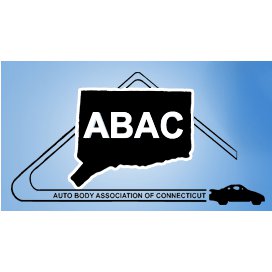
Conn. auto body association urges state tax panel to end double tax on paint and materials
By onAssociations | Business Practices | Legal | Repair Operations
The Auto Body Association of Connecticut has urged the Connecticut State Tax Panel to stop what it calls effectively double taxation of paint and materials used in collision repair.
ABAC President Anthony Ferraiolo pointed out the issue in testimony submitted for the panel’s Tuesday meeting.
“We advocated for reform because auto body repairers had been unfairly penalized by a recent Department of Revenue Services interpretation that paint and materials used in auto repair should be taxed twice: once at wholesale purchase and once at retail sale,” he wrote. “In addition to being inequitable from a tax policy perspective, it was inconsistent with reasonable regulatory interpretations to the contrary and years of industry practice to the contrary.”
Only five states tax both an auto body shop for buying paint and materials and then the customer with the final bill, Georgia Collision Industry Association Executive Director Howard Batchelor demonstrated in a comprehensive national paint and materials tax study.
The study, which won Batchelor the Society of Collision Repair Specialists Individual Achievement at the April Collision Industry Conference, found Connecticut, Hawaii, Indiana, New York and Rhode Island “double-dipping” and showed the P&M tax environment in nearly every other state.
“By way of example; when the shop purchases $ 100.00 of toner mixtures, the shop is charged with sales tax of 6.35% for a total of $ 106.35,” CPAs Thomas Valentino and Jeffrey Cheney of Meyers, Harrison & Pia wrote in a letter supporting the ABAC stance. “If the shop uses that same quantity on a customers’ car they must collect sales tax. The bill to the consumer would state ‘paint’ and the charge would be $ 106.35 and tax would be collected on $ 106.35 for a total of $ 113.10. It appears the Department of Revenue Services would be collecting tax twice on the same item.”
Ferraiolo pointed out that the regulation charging the customer, not the shop, the sales tax made sense when paint was purchased specifically for use on a single car.
But as collision repairers now buy toner and mix it electronically, Ferraiolo observed.
“This modern system of purchasing paint and related materials and mixing only what is needed not only saves the consumer money, but also saves the environment from hazardous waste storage,” he wrote.
Unfortunately, this paint appears in the state’s eyes to be both a bulk consumable and one of the invoiced taxable auto parts which “leave on the car,” as the saying goes.
“We believe the original intent of the statute was to differentiate between consumable paint used by the auto repair shop versus paint used to finish an auto specifically for a customer,” Valentino and Cheney wrote. “By meeting the other aspects of the statute, i.e. separately stating the charge for customers, etc. we believe the auto repair business should be allowed to include its paint mixtures under this law and the law should be rewritten to conform with current approaches to repairs without losing the intent of the law.”
It’s unclear how successful the ABAC will be. Tax Panel Co-Chairman William Nickerson, former Senate ranking member warned the audience prior to Wednesday’s hearing that the mission was to be “tax-neutral.”
“We do not have the inclination or the authority to suggest that the Legislature increase or decrease taxes overall,” he said. “That is not our charge.”
The body is charged, however, with evaluating Connecticut’s taxes for factors including “equity.”
Ferraiolo also reminded the panel of ABAC’s support for House Bill 5655, which received a hearing by the Joint Committee on Finance, Revenue and Bonding in March but failed to advance any further during the session.
HB 5655 if passed would “(1) clarify the applicability of sales and use taxes on wholesale sellers of paint used for motor vehicle repair, (2) reduce the amount of such wholesale taxes, and (3) improve the collection of sales and use taxes on such paint from motor vehicle dealers and repairers,” according to its language.
More information:
Connecticut State Tax Panel, Sept. 16, 2015
Letter from Meyers, Harrison & Pia included with Ferraiolo’s testimony
Connecticut State Tax Panel, Sept. 16, 2015
Featured image: The logo of the Auto Body Association of Connecticut is shown. (Provided by Auto Body Association of Connecticut)
